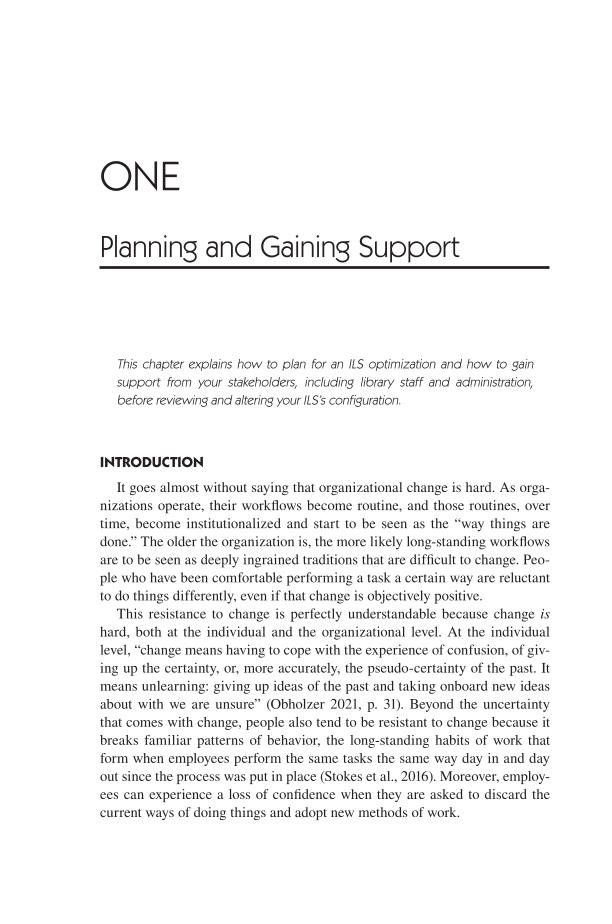ONE Planning and Gaining Support This chapter explains how to plan for an ILS optimization and how to gain support from your stakeholders, including library staff and administration, before reviewing and altering your ILS’s configuration. INTRODUCTION It goes almost without saying that organizational change is hard. As orga- nizations operate, their workflows become routine, and those routines, over time, become institutionalized and start to be seen as the “way things are done.” The older the organization is, the more likely long-standing workflows are to be seen as deeply ingrained traditions that are difficult to change. Peo- ple who have been comfortable performing a task a certain way are reluctant to do things differently, even if that change is objectively positive. This resistance to change is perfectly understandable because change is hard, both at the individual and the organizational level. At the individual level, “change means having to cope with the experience of confusion, of giv- ing up the certainty, or, more accurately, the pseudo-certainty of the past. It means unlearning: giving up ideas of the past and taking onboard new ideas about with we are unsure” (Obholzer 2021, p. 31). Beyond the uncertainty that comes with change, people also tend to be resistant to change because it breaks familiar patterns of behavior, the long-standing habits of work that form when employees perform the same tasks the same way day in and day out since the process was put in place (Stokes et al., 2016). Moreover, employ- ees can experience a loss of confidence when they are asked to discard the current ways of doing things and adopt new methods of work.
Document Details My Account Print multiple pages
Print
You have printed 0 times in the last 24 hours.
Your print count will reset on at .
You may print 0 more time(s) before then.
You may print a maximum of 0 pages at a time.





































































































































































